Four Film Noir Classics Vol. 2 (1944-1955)
Four films from Universal explore different aspects of crime...
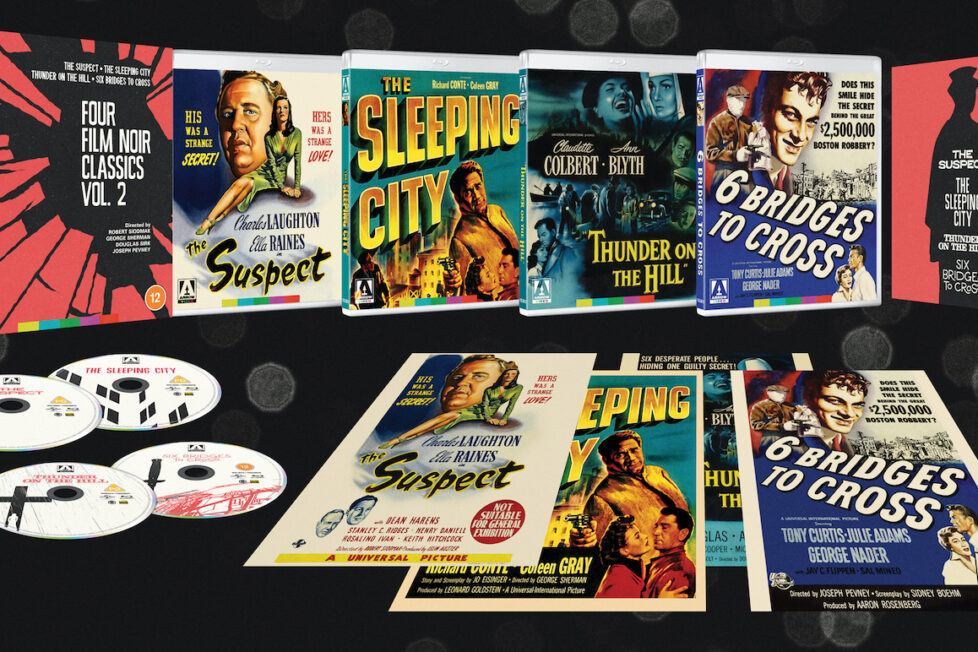
Four films from Universal explore different aspects of crime...


Defining film noir is difficult, but this latest anthology of Universal releases surely stretches the term. All four films concern crime in different ways, certainly, but only The Suspect explores moral ambiguity. The Sleeping City is a straightforward police procedural in an unusual setting, while Thunder on the Hill might seem to pose difficult questions about right and wrong but largely succeeds in avoiding them, and the moral boundaries are pretty clearly set in Six Bridges to Cross as well.
That said, The Suspect is a minor masterpiece, The Sleeping City is eminently watchable, and Six Bridges to Cross provides a chance to see great performances from both Tony Curtis and Sal Mineo near the beginning of their careers. Only Thunder on the Hill is a disappointment. While it’s interesting that it comes from the most famous director, Douglas Sirk, the far superior The Suspect comes from the noir specialist Robert Siodmak.
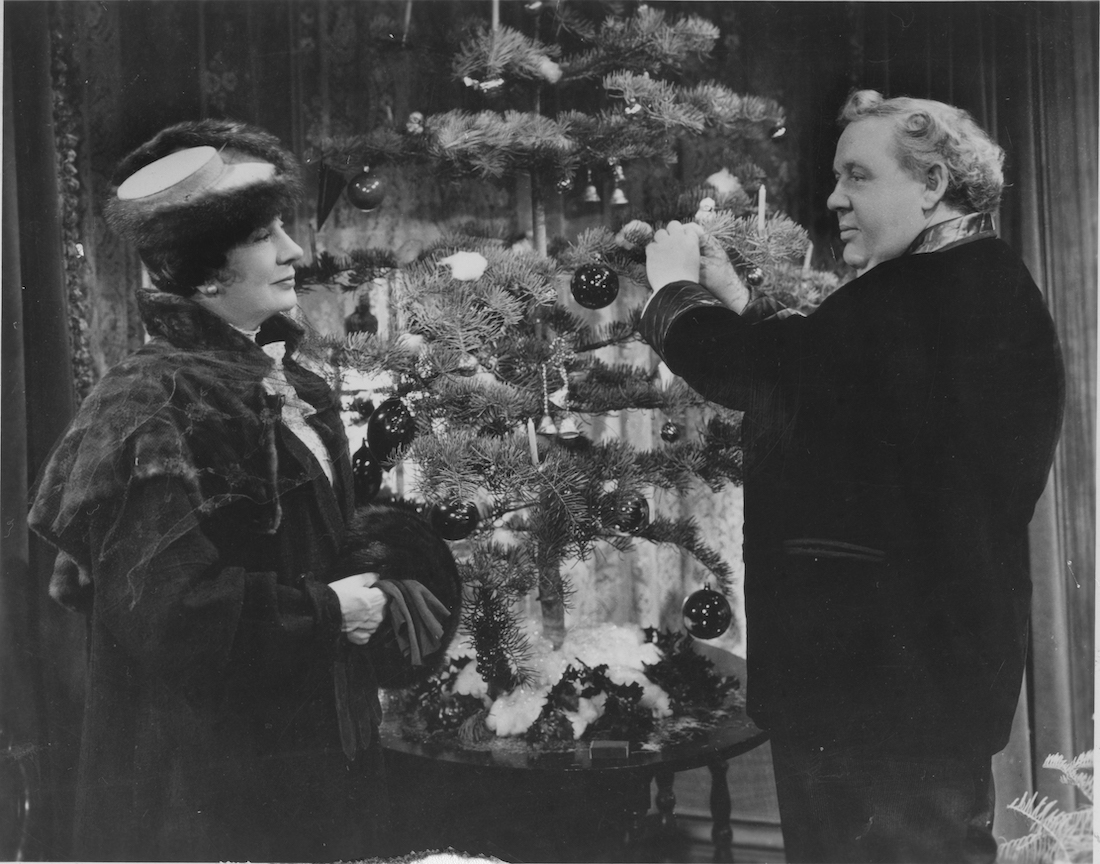

A kind-hearted middle-aged man falls in love with a younger woman, but he’s already married to a monstrous wife…
Crime couldn’t be seen to pay, according to the Hays Code, and legal—if not moral —justice is indeed implicitly done by the end of The Suspect. But though the opening image depicts a bowler-hatted gentleman casting a long noir-ish shadow, the film’s sympathies clearly lie with him, a good man driven to do bad things.
In Edwardian London, Philip (Laughton), is the manager of an upmarket tobacco shop and an all-around nice guy; good-naturedly lecturing the office messenger boy (a charming Raymond Severn) about honesty. But despite his dutiful attempts, he’s never been happy with his shrewish wife Cora (Rosalind Ivan), an unbearable woman whose behaviour has even forced their adult son John (Dean Harens) into leaving the family home, and when Philip meets the younger Mary Gray (Ella Raines) he falls in love with her.
Their romance is genuine and sweet, and only one thing—Cora—stands between them and long-lasting happiness. It’s soon clear where the film’s heading with this. “I’d like to know what’s going on in your head,” Cora demands angrily of her husband, and calmly he replies “it’s much better that you shouldn’t. It might frighten you.”
Suffice it to say, it’s not long before Inspector Huxley (Stanley Ridges) is speculating on whether Cora’s accidental death was in fact a murder, and Philip finds himself caught up in unexpected complications.
A scene where Huxley outlines how he thinks the murder might have been conducted, with Philip now suddenly shot by director Robert Siodmak as if he were a villain, is one of the film’s best. So are several other key turning points, like a restaurant scene where Philip reveals to Mary that he’s married, and another at his home where Cora lets on she’s aware of his affair (as he puts up Christmas decorations, still trying his best to make their awful marriage a liveable one).
But while the narrative is compelling and the writing lean and well-paced, the greatest strength of The Suspect is the performances. Laughton is at the top of his game here as the mild, gentle Philip (very different from some of his larger-than-life roles), making the most of his ability to convey meaning in a single glance. Raines is fine as Mary, too, but the best of the women is Ivan as the vengeful, bitter, mocking Cora, and Molly Lamont as a neighbour beaten down by her own husband but not entirely weakened.
The Suspect works superbly well on every level, as you’d expect from the noir master Siodmak. James Agee called it “visually gifted”, and it is indeed atmospheric while never piling on irrelevant period detail. It’s not really a dark movie—indeed there’s little humour—but rather a tragedy with a real dilemma and feelings at its heart. “I like people and I’ve never wanted to hurt them,” says Philip… and yet he does.
USA | 1944 | 85 MINUTES | 1.37:1 | BLACK & WHITE | ENGLISH
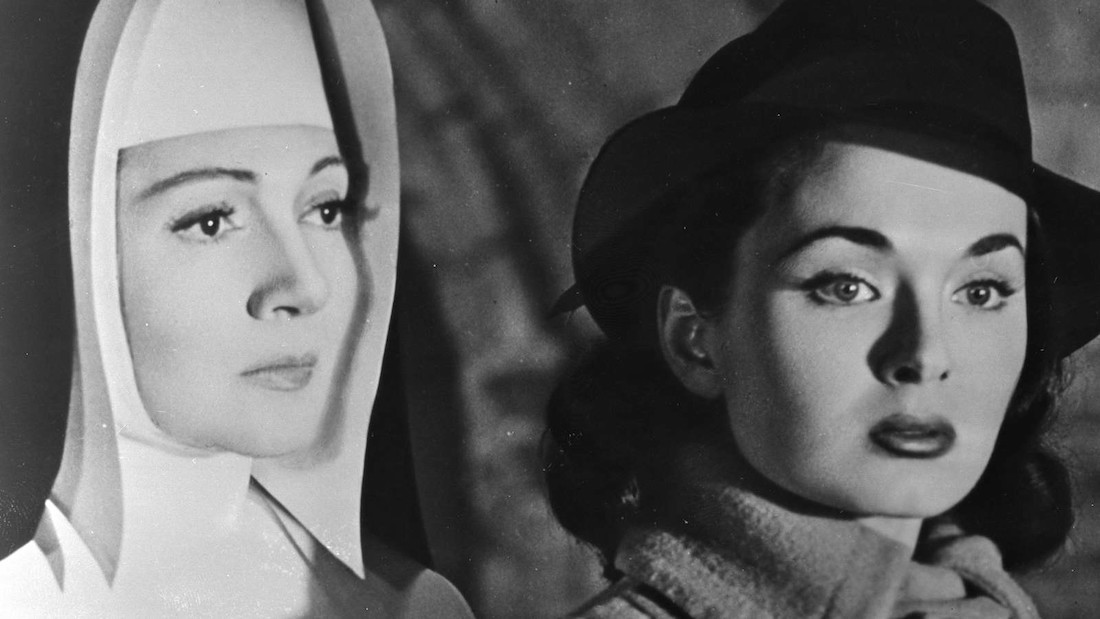

A New York City police officer goes undercover at a hospital, posing as a doctor, to investigate the murder of an intern.
The Sleeping City begins with an introduction to camera by Richard Conte, its star, explaining that it was shot at Bellevue Hospital in New York—and then, after touting the film’s authenticity, hastening to add that the lurid tale of drugs, gambling, murder, and suicide about to be told is completely fictional.
Director George Sherman, better-known for his westerns, moves briskly to set up the plot premise: a young doctor is murdered near the hospital and detective Fred Rowan (Conte) of the “confidential squad”, who conveniently has had some medical training, is sent to join the institution’s staff undercover.
The hospital locations and occasional shots of New York City beyond add much authenticity. Jo Eisinger’s screenplay aims for the same with its use of slang—a cop’s assignment to a case is a “squeal”, a gun is a “piece”, and so on—though some dialogue is written for clever effect rather than strict verisimilitude. Clues that are only understandable in hindsight are skilfully inserted, and the way that “good” characters can eventually become seen in a different light is effective.
The cast is also generally strong, despite a strange performance from John Alexander as Rowan’s superior officer, with facial tics and over-deliberate delivery. Conte (strikingly resembling Jon Hamm as Don Draper in Mad Men) is much better, as are Alex Nicol as his hospital roommate Steve and an uncredited Frank M. Thomas as another policeman.
Richard Taber as Pop Ware, a hospital worker who runs an illegal gambling operation on its premises, at first seems incongruous comic relief but later becomes unexpectedly important to the plot and reveals his character well. Coleen Gray is the female lead, but as so often in police procedurals, romance takes a definite second place to detection.
The Sleeping City has no ambitions to profundity, but capable performances, smart plotting and adroit use of its real-world setting make it a fine example of its kind.
USA | 1950 | 86 MINUTES | 1.37:1 | BLACK & WHITE | ENGLISH
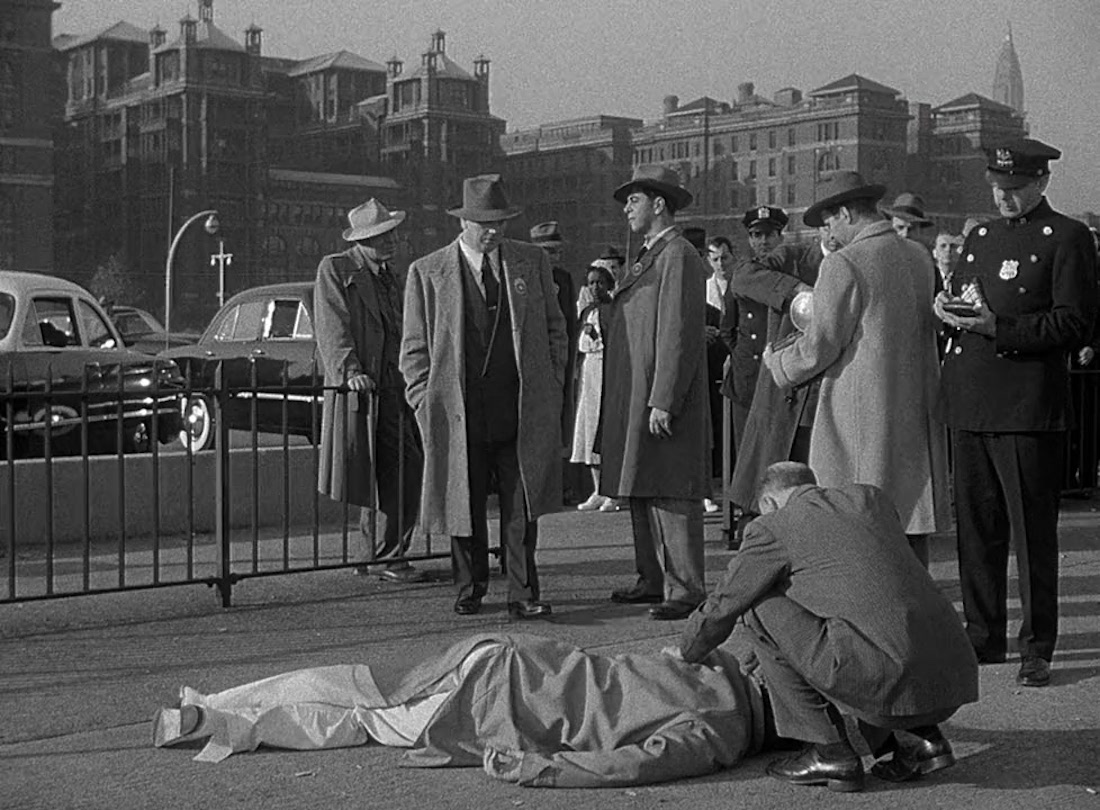

A convicted murderess, on her way to be hanged, is trapped by floods at a convent where one of the nuns starts to doubt her guilt.
Thunder on the Hill is based on the stage play Bonaventure by Charlotte Hastings, and it shows. Almost all the significant action is confined to a few rooms in the convent where Sister Mary (Claudette Colbert) encounters the supposed killer Valerie Carns (Ann Blyth), “the devil’s daughter”. The broader setting is the English county of Norfolk (which was, as it happened, hit by major flooding a couple of years after the film’s release), but apart from some picturesque footage of refugees arriving at the convent with their livestock, this has little relevance and the story could take place almost anywhere.
Much of the dialogue is somewhat stagey, too, notably the long and rather mystifying arguments among the nuns near the beginning of the film, alleviated only by some interesting hints of scandal around Sister Mary.
The more successful aspects of the movie tend to be the smaller touches: most notably, a powerful scene where Valerie plays piano music composed by her brother—the man she is said to have killed—and an atmospheric sequence with a small boat making its way through fog and floodwater. The convent setting is nicely used at times, too, and crisp images with stark lighting underline the gravity of Valerie’s situation.
They’re not enough, however, to lift the movie above the level of humdrum. Too much time is spent on other characters who are barely more than sketched-in, as well as on Willie (Michael Pate), a local boy with learning difficulties (not the term people in the film would’ve used…) who helps out at the convent. He’s a caricature of a yokel, tends to dominate the scenes he appears in, and yet doesn’t ultimately add much. Philip Friend, meanwhile, overacts in the crucial role of Valerie’s fiancé.
Though director Douglas Sirk’s great melodramas remained a few years away when Thunder on the Hill was made, one can sense the same intensity of feeling here. It’s too often diluted, however, by other goings-on, and what ought to be the overwhelming questions at the centre of the film—whether Valerie is innocent, whether Sister Mary can save her from the scaffold, whether saving Valerie would counterbalance the nun’s loss of her own sister to suicide, and whether the floods are the will of God enabling this—don’t achieve the impact that they should. This movie’s main interest may be historical, as a precursor of Sirk’s better-known work.
USA | 1951 | 84 MINUTES | 1.37:1 | BLACK & WHITE | ENGLISH
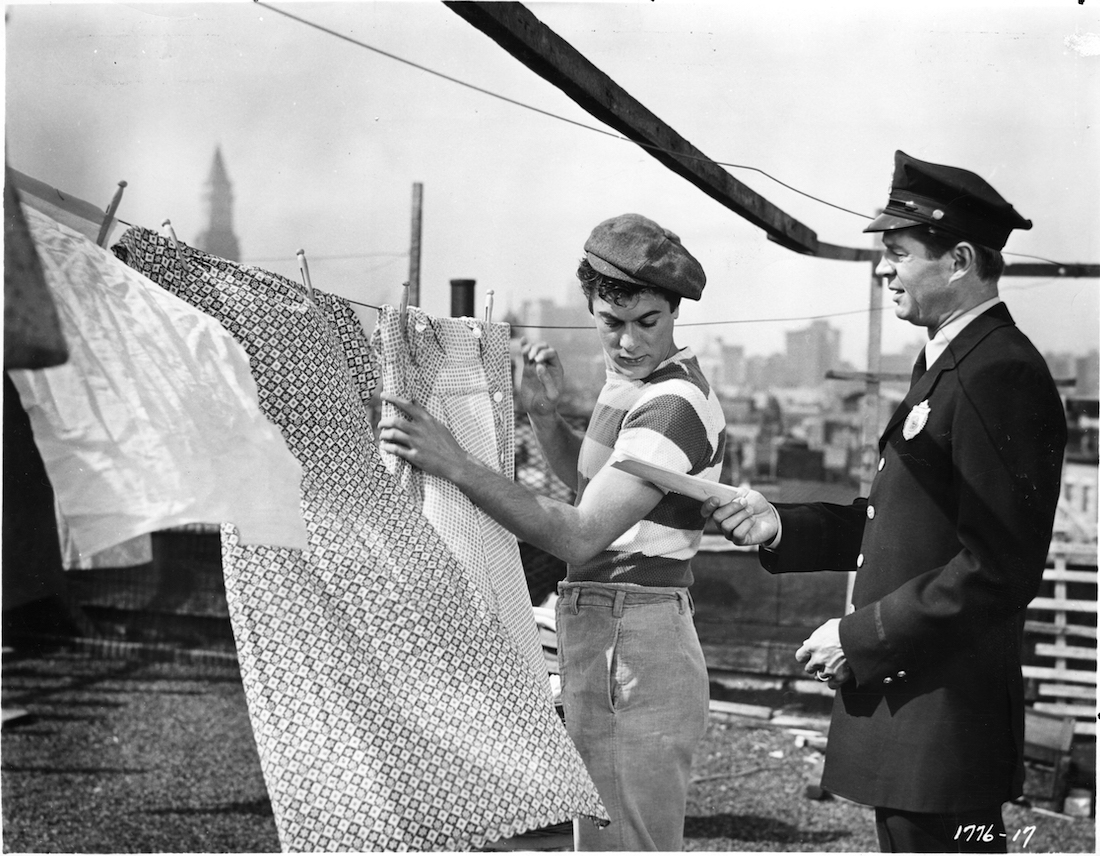

After a rookie cop shoots a teenage burglar, the two become friends. But as the boy grows up to become a gangster, the policeman is forced to accept that they may be permanently on opposite sides of the law.
A young Tony Curtis (29 when the film was released) and an even younger Sal Mineo (15 and playing Curtis’s character as a boy) are the highlights of this impassioned but slightly plodding tale that focuses on the changing relationship between a cop and a criminal.
The title song by Sammy Davis Jr. asks, of the titular six bridges, “which one is the right one?”, and though the question does become relevant on a literal level toward the end, its real significance relates to the choices that Jerry (Curtis/Mineo) makes in life.
When Jerry’s shot and wounded as a teenager by patrolman Ed (George Nader), he’s only escaping the scene of a minor crime, and after Ed befriends him he’s given plenty of opportunities to reform. Ed clings, too long, to the notion that he will… but, in the end, both the policeman and the film have to acknowledge that Jerry may simply be bad.
Six Bridges to Cross drags a little, notably around a wedding sequence, and the final heist and its aftermath seem a little tacked-on. Conversely, a crucial payroll robbery—Jerry’s first big one—isn’t even depicted! Nader is rather bland in one of the two key roles, as well. But both Curtis and Mineo are terrific, the former contrasting a confident public persona with a less assured reality beneath. Among the supporting cast, Harry Bartell stands out as a priest.
Although Six Bridges to Cross is dedicated (as so often) to the police and specifically to the Boston Police Department, members of which appear in the film, it often seems much more interested in crime than law enforcement. Alongside its emphasis on people and morality, the movie offers some well-executed and detailed depictions of Jerry’s crimes, particularly a clever horse-racing scam (though the race shown on-screen doesn’t seem to be the one described over the Tannoy…) and a heist where the criminals, with surgical tubing concealing their faces, move almost balletically.
Fascinating pre-high-rise Boston locations add to the interest of this often compelling if uneven movie.
USA | 1955 | 96 MINUTES | 2.0:1 | BLACK & WHITE | ENGLISH

Technically, the transfers here are all excellent (a few moments where The Sleeping City looks a bit over-exposed are the only possible blemishes), and the commentaries and discussions are of a high standard, packed with information and insight and never wandering or hemming and hawing. Ironically, Thunder on the Hill—the least satisfying of the four movies—contains the best of them.

directors: ‘The Suspect’: Robert Siodmak. ‘The Sleeping City’: George Sherman. ‘Thunder on the Hill’: Douglas Sirk. ‘Six Bridges to Cross’: Joseph Pevney.
writers: ‘The Suspect’: Bertram Millhauser & Arthur T Horman (based on the novel ‘This Way Out’ by James Ronald). ‘The Sleeping City’: Jo Eisinger. ‘Thunder on the Hill’: Oscar Saul & Andrew Solt (based on the play ‘Bonaventure’ by Charlotte Hastings). ‘Six Bridges to Cross’: Sydney Boehm (based on journalism by Joseph F. Dinneen).
starring: ‘The Suspect’: Charles Laughton, Ella Raines, Stanley Ridges & Rosalind Ivan. ‘The Sleeping City’: Richard Conte, Coleen Gray & Richard Taber. ‘Thunder on the Hill’: Claudette Colbert, Ann Blyth, Robert Douglas & Philip Friend. ‘Six Bridges to Cross’: Tony Curtis, George Nader & Sal Mineo.
